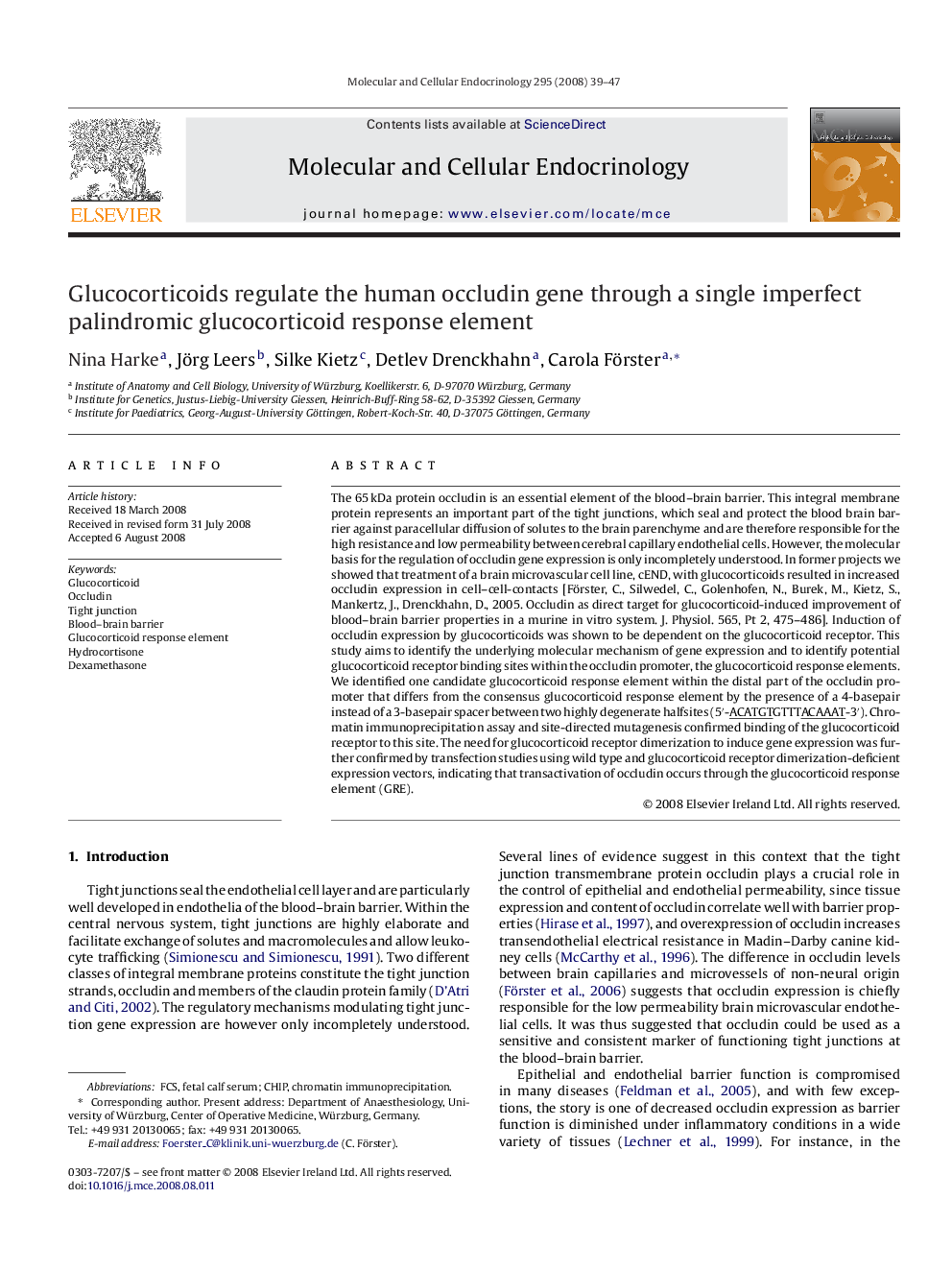| کد مقاله | کد نشریه | سال انتشار | مقاله انگلیسی | نسخه تمام متن |
|---|---|---|---|---|
| 2197540 | 1550966 | 2008 | 9 صفحه PDF | دانلود رایگان |

The 65 kDa protein occludin is an essential element of the blood–brain barrier. This integral membrane protein represents an important part of the tight junctions, which seal and protect the blood brain barrier against paracellular diffusion of solutes to the brain parenchyme and are therefore responsible for the high resistance and low permeability between cerebral capillary endothelial cells. However, the molecular basis for the regulation of occludin gene expression is only incompletely understood. In former projects we showed that treatment of a brain microvascular cell line, cEND, with glucocorticoids resulted in increased occludin expression in cell–cell-contacts [Förster, C., Silwedel, C., Golenhofen, N., Burek, M., Kietz, S., Mankertz, J., Drenckhahn, D., 2005. Occludin as direct target for glucocorticoid-induced improvement of blood–brain barrier properties in a murine in vitro system. J. Physiol. 565, Pt 2, 475–486]. Induction of occludin expression by glucocorticoids was shown to be dependent on the glucocorticoid receptor. This study aims to identify the underlying molecular mechanism of gene expression and to identify potential glucocorticoid receptor binding sites within the occludin promoter, the glucocorticoid response elements. We identified one candidate glucocorticoid response element within the distal part of the occludin promoter that differs from the consensus glucocorticoid response element by the presence of a 4-basepair instead of a 3-basepair spacer between two highly degenerate halfsites (5′-ACATGTGTTTACAAAT-3′). Chromatin immunoprecipitation assay and site-directed mutagenesis confirmed binding of the glucocorticoid receptor to this site. The need for glucocorticoid receptor dimerization to induce gene expression was further confirmed by transfection studies using wild type and glucocorticoid receptor dimerization-deficient expression vectors, indicating that transactivation of occludin occurs through the glucocorticoid response element (GRE).
Journal: Molecular and Cellular Endocrinology - Volume 295, Issues 1–2, 25 November 2008, Pages 39–47